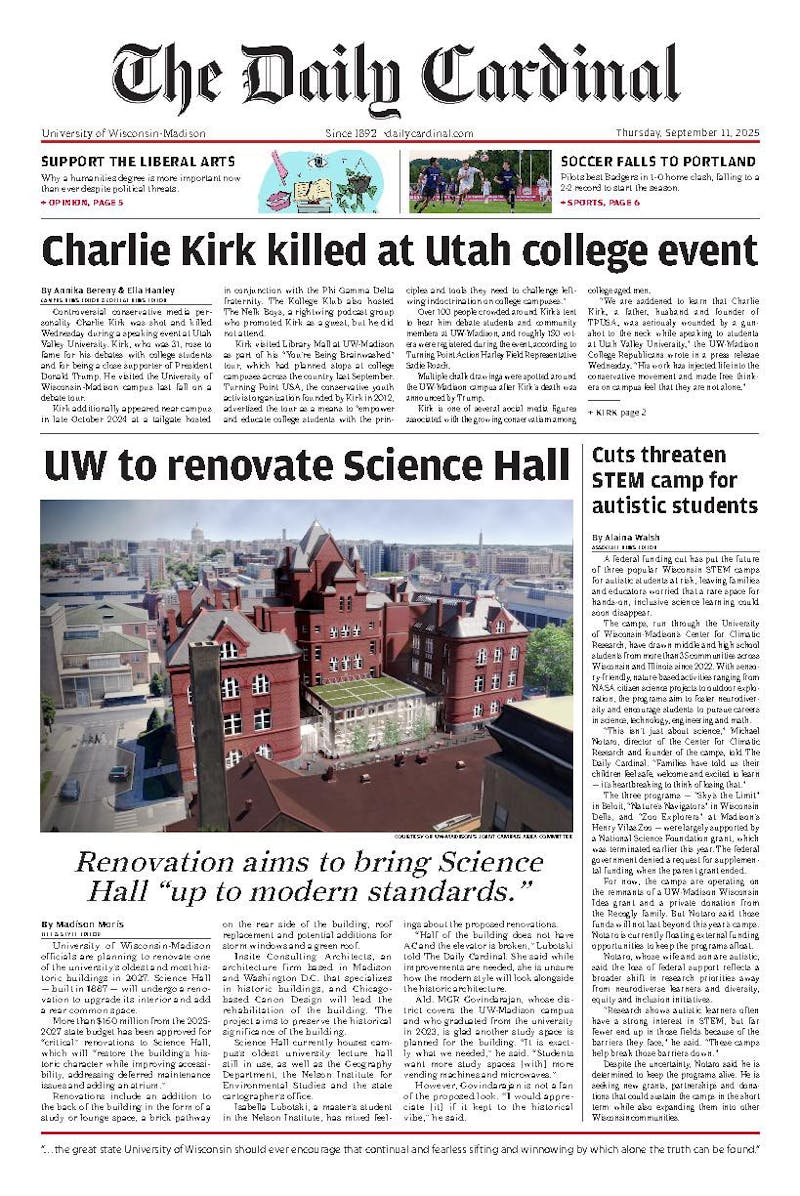Arthouse drama film “Harvest” made its debut on MUBI, an arthouse and independent streaming service, in August 2025 after a worldwide run in film festivals, including the 81st Venice National Film Festival where it competed for the highest prize.
The film follows Walt (Caleb Landry Jones), a widowed village worker, as he watches his village become increasingly divided with waves of migration slowly dismantling his community’s way of life.
The breakdown starts when Mr. Earle, the chartmaker hired by Master Jordan, starts to be included in the village’s sacred traditions, and a trio of travelers are caught and blamed for the burning of a rookery. Both Walt and his best friend since childhood, Mayor Charles Kent (Harry Melling), lost their wives in the last five years. Mayor Kent inherited his late wife’s land and must watch over the villagers who live there.
Nature is a recurring motif in this movie, in particular its symbiotic relationship with man. This is exemplified by the many touching moments in the beginning of the film, as Walt prances through a grassland and gently holds a butterfly and kisses it.
Walt’s character is quiet and observant but does not act even when he wants to. He is paralyzed by a fear of hurting people. He has trouble expressing his emotions and standing up for himself, which in turn slowly crumbles the village’s trust in him.
Despite being hardworking and gentle, he is ostracized. This goes for the other two scapegoats of the film as well: Mr. Earle and travelers from a nearby village.
The villagers have a xenophobic lack of trust in outsiders. The three travelers arrive on shore, and although the villagers surround them violently, the travelers lower their weapons to attempt to communicate peacefully.
This doesn’t work in their favor, however, because of a recent fire set to Kent’s rookery of doves. There are a couple of boys in the village who Walt knows like to burn things, but he says nothing and lets the villagers blame the travelers.
Master Jordan, the brother of Mayor Kent’s late wife, has come to reclaim the land and has hired Mr. Earle to chart it so that he can gather a workforce to reap the most wealth from the next harvest.
As a non-native Black man, Mr. Earle is immediately distrusted. However, Walt becomes good friends with him, bonding over their shared love of nature and art. Mr. Earle listens to him and allows him to be himself, something Walt doesn’t often receive from others
The film handled the concept of colonialism gracefully, in a way that creeps up on the audience, even though the signs were all there. Walt’s paralysis to the situation is relatable and tragic; his avoidance and fear stimulates the division and displacement by Master Jordan. The camera work is largely 16mm long shots of faces and nature, showing the sameness between grit and beauty.
The film is full of both subtle and overt motifs and themes of scapegoating, ownership, nature and paralysis. The unique setting and circumstances lay the groundwork for a story that differs in pace from that of the usual film, perfect for people who enjoy history, exemplary camera work and a slow burn.






